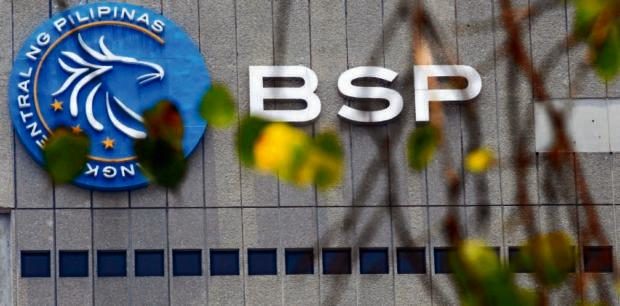Despite falling inflation, BSP plays it safe by keeping rates high

Bangko Sentral ng Pilipinas. (File photo / Philippine Daily Inquirer)
The inflation rate may be on the downtrend over the last two months, but the central bank wants to see more proof of easing prices before it allows more cash to return to the financial system to feed the growing Philippine economy.
On Thursday — at its first meeting of 2019 — the Monetary Board of the Bangko Sentral ng Pilipinas opted to keep its key interest rates unchanged, dashing hopes of bankers and analysts that the lower-than-expected inflation rate for January would prompt the policymakers to take their foot off the economy’s brake pedal and shift to the accelerator.
At its meeting on monetary policy, the Monetary Board decided to keep the interest rate on the BSP’s overnight reverse repurchase facility unchanged at 4.75 percent. The interest rates on the overnight lending and deposit facilities were likewise held steady. These rates are used as a guide by banks for pricing their own loans to corporate and retail borrowers.
“The Monetary Board’s decision is based on its assessment of a more manageable inflation environment,” Deputy Governor Diwa Guinigundo said in a press briefing. “Latest baseline inflation forecasts show inflation settling within the target band of 3 percent, plus or minus 1 percentage point for 2019-2020, as price pressures continue to recede due to the decline in international crude oil prices and the normalization of supply conditions for key food items.”
“Inflation expectations have also declined further and are now aligned to the inflation target for 2019-2020,” he declared.
The BSP deputy chief said that, at the same time, domestic demand conditions have remained firm, supported by a projected recovery in household spending and the sustained implementation of the government’s infrastructure program.
The government announced earlier this week that the inflation rate for January had fallen to 4.4 percent, coming off the full-year inflation rate of 5.2 percent for 2018. This decline — the second consecutive month of easing price pressures — prompted calls for the central bank to either cut interest rates or reduce the amount of cash banks are required to hold in reserve. Either of these monetary policy easing moves would have helped financial institutions lend more to corporate and retail borrowers and, thus, help fuel economic growth.
Guinigundo said, however, that “the risks to the inflation outlook are seen to remain evenly balanced for 2019 while leaning toward the downside for 2020 given a more uncertain global economic environment, which in turn could temper potential upward pressures from commodity prices in the coming months.”
“Given these considerations, the Monetary Board deems the prevailing monetary policy settings to be appropriate, as previous monetary responses continue to work their way through the economy,” he said.
“The Monetary Board also emphasized that the BSP remains vigilant against developments that could affect the outlook for inflation and is prepared to take appropriate policy action as necessary to safeguard its price and financial stability objectives,” the BSP deputy chief added.